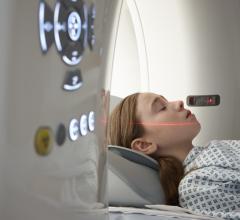February 1, 2016 — The Defense Advanced Research Projects Agency (DARPA) has established a new Electrical Prescription (ElectRx) program to help spur research in mapping the neural circuits governing organ systems. The goal of the program is to develop new technologies that could improve physical and mental health by using targeted simulation of the peripheral nervous system to exploit the body’s natural ability to quickly and effectively heal itself.
Our bodies maintain a state of equilibrium, or homeostasis, through our peripheral nervous system, through neural reflexes that modulate the function of organ systems such as the heart, stomach, intestines or bladder. For instance, the vagus nerve linking the brain to the heart can stimulate the heart when an anxiety stimulus is experienced or can stimulate the stomach when hunger is recorded. If researchers could map the neural circuits governing these systems, they might then be able to develop minimally invasive neural and bio-interface technologies with unprecedented levels of precision, targeting and scale.
The agency recently selected seven teams, including a Columbia Engineering team led by Elisa Konofagou, professor of biomedical engineering, which will begin work on Phase 1. Backed by the four-year $3.33 million grant, Konofagou’s team will work on developing a new way to use focused ultrasound for stimulation of peripheral nerves that will ultimately be able to control organ function.
“What we’re working on is a very exciting application for ultrasound,” said Konofagou, who has a joint appointment in radiology (physics). “We could, for the first time, provide a noninvasive approach to nerve and organ stimulation while at the same time advance our understanding of the coupling between the mechanical and electrical activity at the cellular, multi-cellular and organ levels. We think targeted ultrasound could be a good option for managing conditions such as chronic pain and neuropathy.”
Konofagou is collaborating with Ken Shepard, Lau Family Professor of Electrical Engineering and professor of biomedical engineering, and Ellen Lumpkin, associate professor of somatosensory biology at Columbia University Medical Center. The team is working to optimize the ultrasound parameters, develop wearable devices to stimulate the saphenous nerve that runs along the middle of the thigh and along the femoral vessels and is responsible for skin sensation, and determine the mechanism by which ultrasound is capable of inducing such effects.
“We know that, as ultrasound propagates through biological tissue,” Konofagou explained, “it exerts mechanical pressure on that tissue, which stimulates specific mechanosensitive channels in neurons and causes them to ‘turn on.’ So we think that this is a way we can use ultrasound to turn specific nerves ‘on’ or ‘off’ depending on what the treatment calls for.”
In awarding the DARPA grants, Doug Weber, the ElectRx program manager and a biomedical engineer who previously worked as a researcher for the Department of Veterans Affairs, noted, “Using the peripheral nervous system as a medium for delivering therapy is largely new territory and it’s rich with potential to manage many of the conditions that impact the readiness of our military and, more generally, the health of the nation. It will be an exciting path forward.”
For more information: www.bme.columbia.edu


 July 25, 2024
July 25, 2024 








